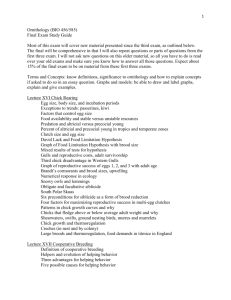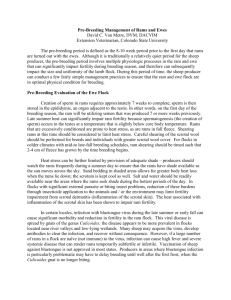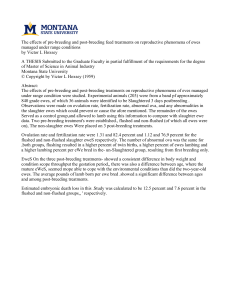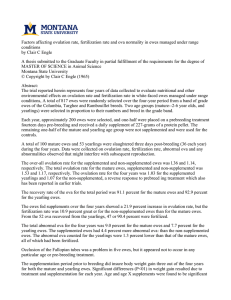BREEDING STRATEGY OF THE HUNGARIAN SHEEPBREEDERS
advertisement
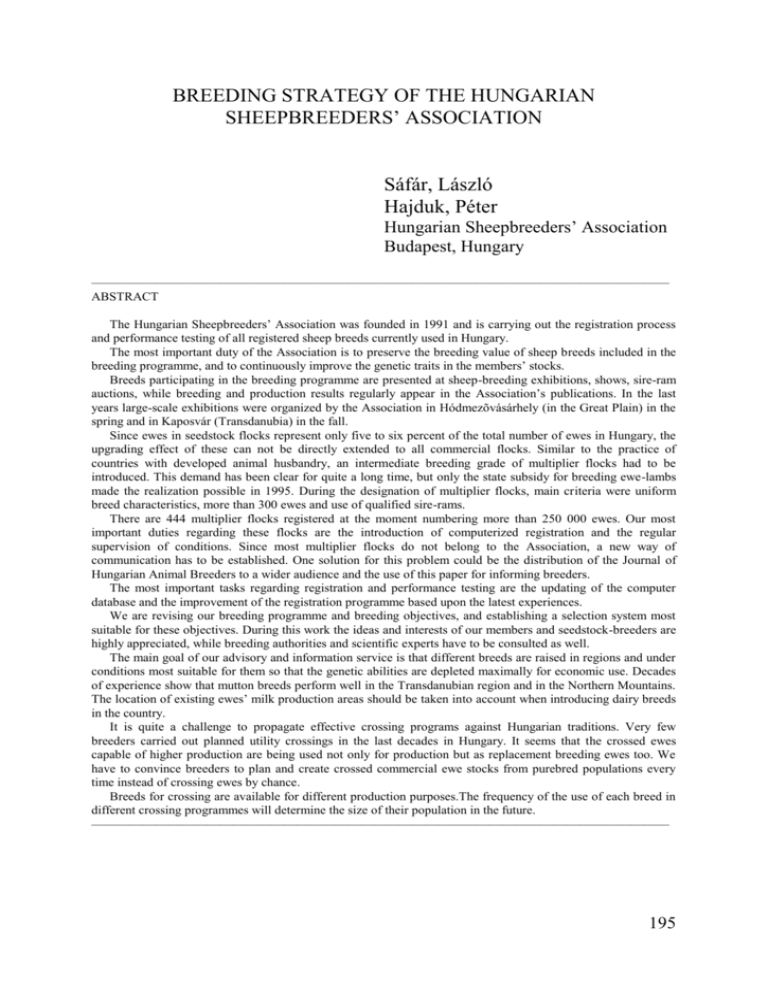
BREEDING STRATEGY OF THE HUNGARIAN SHEEPBREEDERS’ ASSOCIATION Sáfár, László Hajduk, Péter Hungarian Sheepbreeders’ Association Budapest, Hungary ————————————————————————————————————————————— ABSTRACT The Hungarian Sheepbreeders’ Association was founded in 1991 and is carrying out the registration process and performance testing of all registered sheep breeds currently used in Hungary. The most important duty of the Association is to preserve the breeding value of sheep breeds included in the breeding programme, and to continuously improve the genetic traits in the members’ stocks. Breeds participating in the breeding programme are presented at sheep-breeding exhibitions, shows, sire-ram auctions, while breeding and production results regularly appear in the Association’s publications. In the last years large-scale exhibitions were organized by the Association in Hódmezõvásárhely (in the Great Plain) in the spring and in Kaposvár (Transdanubia) in the fall. Since ewes in seedstock flocks represent only five to six percent of the total number of ewes in Hungary, the upgrading effect of these can not be directly extended to all commercial flocks. Similar to the practice of countries with developed animal husbandry, an intermediate breeding grade of multiplier flocks had to be introduced. This demand has been clear for quite a long time, but only the state subsidy for breeding ewe-lambs made the realization possible in 1995. During the designation of multiplier flocks, main criteria were uniform breed characteristics, more than 300 ewes and use of qualified sire-rams. There are 444 multiplier flocks registered at the moment numbering more than 250 000 ewes. Our most important duties regarding these flocks are the introduction of computerized registration and the regular supervision of conditions. Since most multiplier flocks do not belong to the Association, a new way of communication has to be established. One solution for this problem could be the distribution of the Journal of Hungarian Animal Breeders to a wider audience and the use of this paper for informing breeders. The most important tasks regarding registration and performance testing are the updating of the computer database and the improvement of the registration programme based upon the latest experiences. We are revising our breeding programme and breeding objectives, and establishing a selection system most suitable for these objectives. During this work the ideas and interests of our members and seedstock-breeders are highly appreciated, while breeding authorities and scientific experts have to be consulted as well. The main goal of our advisory and information service is that different breeds are raised in regions and under conditions most suitable for them so that the genetic abilities are depleted maximally for economic use. Decades of experience show that mutton breeds perform well in the Transdanubian region and in the Northern Mountains. The location of existing ewes’ milk production areas should be taken into account when introducing dairy breeds in the country. It is quite a challenge to propagate effective crossing programs against Hungarian traditions. Very few breeders carried out planned utility crossings in the last decades in Hungary. It seems that the crossed ewes capable of higher production are being used not only for production but as replacement breeding ewes too. We have to convince breeders to plan and create crossed commercial ewe stocks from purebred populations every time instead of crossing ewes by chance. Breeds for crossing are available for different production purposes.The frequency of the use of each breed in different crossing programmes will determine the size of their population in the future. ————————————————————————————————————————————— 195


